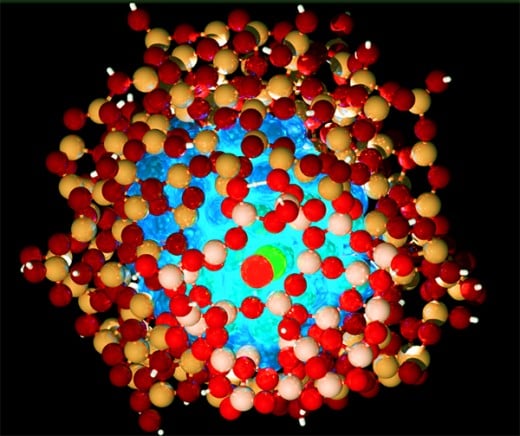Here It Comes: The Next Big (Small) Change
Welcome the Revolution
Get ready, everyone, because the Next Big (Small) Change is coming! In fact, it's already here, and it is spreading farther and farther day by day — even if just by small increments.
No, I'm not talking about an invasion of alien vampires. Or the onslaught of the walking dead. Or the resurgence of the Tea Party. Or reruns profiling the lifestyles of the many various Kardashians/Jenners. (They are so 27 seconds ago!)
I'm talking about the Nano Revolution. (And, no, not the 'Nanoo-nanoo!' revolution! That was just Robin Williams' Mork & Mindy riff.) I'm talking about nanotechnology: the science of objects at the atomic scale.
The advent of nanotechnology is creating a tidal change in the very structure of our world at an eventual scale that will make the computer revolution of the last 50 years look like so many ripples on a summertime fishin' hole.
It's a Small World After All

Putting It In Perspective
To put the Nano Revolution in perspective, it helps to get a sense of what we mean by the 'atomic scale'. Scientists use the nanometer — that is, just one billionth of a meter — to effectively measure particles and events that are at the scale of the atoms that make up you and me and just about everything else in the universe.
On the United States copper penny (illustrated above), for example, former President Abraham Lincoln's nose measures roughly 1.25 million nanometers in length! To state it another way, if you had an ample supply of particles just one nanometer wide, you would have to line up 1,250,000 of them to reach from Lincoln's brow to nose-tip. Clearly, such objects are exceedingly tiny. They can therefore only be observed and manipulated by making use of complex and sophisticated lab equipment, like the scanning tunneling microscope.
Correction!
To be honest, that previous statement is not completely true, for humans have actually been conducting nanotechnology for more than a dozen centuries, without such elaborate or expensive equipment. The early chemical processes that underpinned jewelry-making and other fine arts throughout Classical and Medieval Europe made use of immersed nanoparticles of different substances to create glasses, glazes and finishes with unique color refraction properties. We have nanotechnology to thank for the iridescent Biblical scenes depicted in many cathedrals' ornate stained glass windows.

Virtually Any (Smallish) Size, Any Shape, Any Materials
After the scanning tunneling microscope was introduced in 1981, and the atomic force microscope followed 5 years later, many scientists began manipulating individual atoms of different materials. By 1989, IBM researchers were able to create a mini-IBM logo using just 35 carefully arranged xenon atoms.
Since then, nanofabrication, or the manufacture of different particles and materials via atom manipulation, has spread to scientific and industry research labs of all types throughout the world. Individual atoms and molecules of virtually any element can be manipulated, ranging from those of gold, silver, iron, nickel, carbon, and silicon, for example, all the way to synthetics such as gelatin. Carbon may be formed into single-atom-thick sheets or rolled into tightly locked nanotubes of great strength. Incredibly fine nanowires can be crafted for the next generation of miniaturized electronics. Nanoparticles can also be arranged into a wide variety of shaped 'containers' to carry drugs throughout the human body.
Printing at the nano scale — nanolithography — promises to shrink once more all of the many computer chips proliferating throughout our smart devices and the Internet of Things. As chip sizes shrink, heat generation is reduced, battery life is extended, and devices become smaller and more versatile. Wearable and implantable chips will become ever more plentiful.

Different Scale, Different Properties
Of course, as any elementary particle shrinks in size, its surface area rapidly increases, meaning it can come into contact with — and then react with — far more other elements far more readily. And, as quantum theory has already suggested, at different scales, elements can assume unexpected new states and undertake unexpected new actions and reactions. The very nature and properties of an element fundamentally change as the particle nears nano-scale. Scientists are just beginning to measure the many ways in which those elemental properties, such as weight, color, light transmission, chemical reactivity, conductivity, strength, and so on, are altered in the nano-world. They are also only beginning to test the new and emerging capabilities of those changed elemental properties to better serve science, business, industry, medicine, electronics, and other related fields of human endeavor.
Though it may not be apparent to the naked eye, the revolution is here! And it's only getting bigger (by getting smaller).








